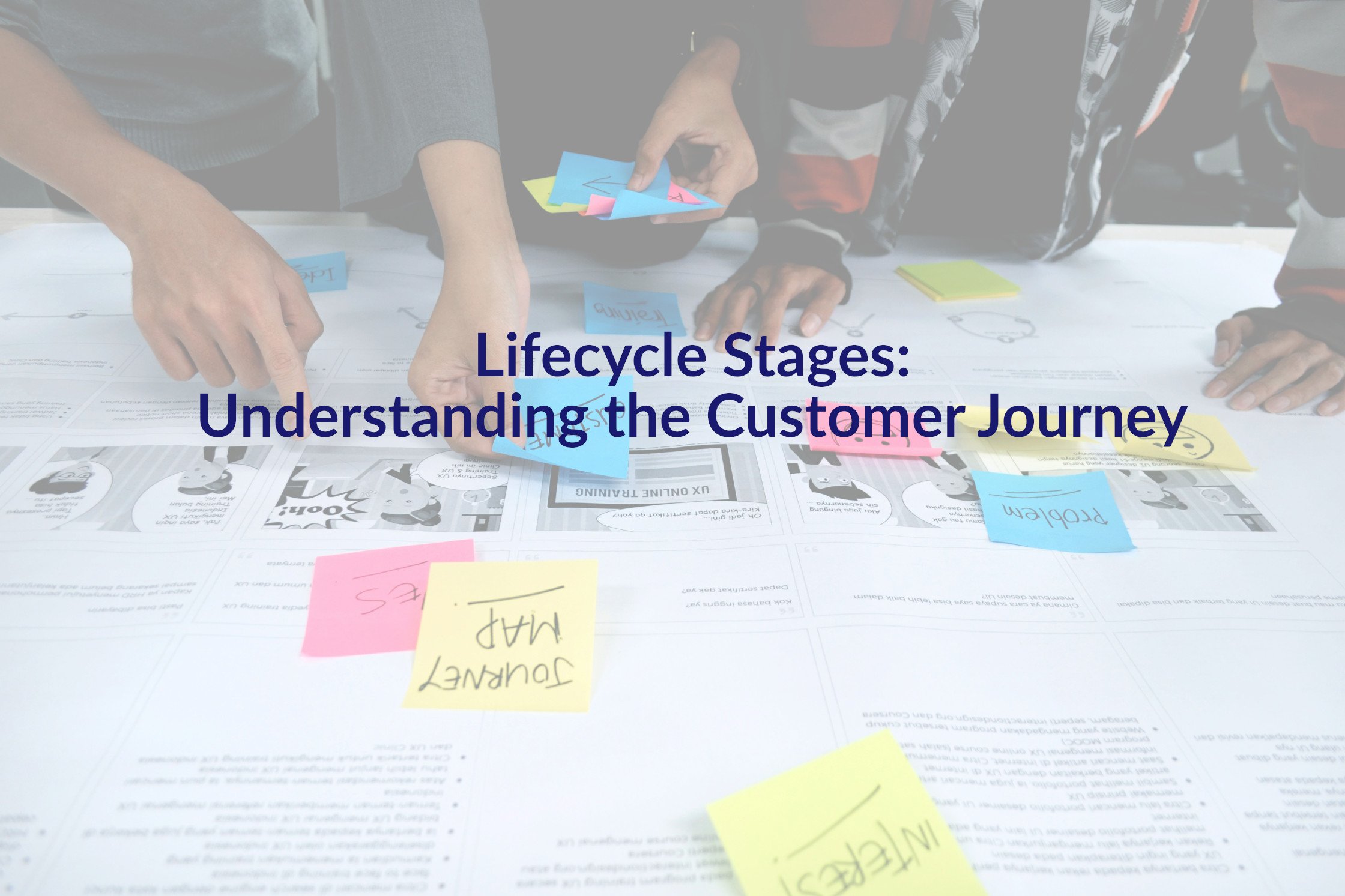Lifecycle Stages: Understanding the Customer Journey
In our last post, "What is Lifecycle Marketing?", we introduced the core stages of the customer journey. Now, let’s dive deeper into those stages and dispel the misconception that marketing culminates with a purchase. The sale is a milestone that marks the beginning of a potentially long and productive relationship, not the finish line. To harness the power of lifecycle marketing, you need to understand and optimize each stage. So, let’s get into them.
1. Awakening Awareness: Sparking Initial Interest
Planting the Seed of Recognition:
In the initial stage, awareness, potential customers become acquainted with your brand. This isn't about pushing a product. Rather, it’s about creating valuable content that resonates with their needs and pain points. For instance, blog posts, social media, and targeted ads can introduce your brand and establish your expertise. You must understand your target audience's problems before you can offer solutions.
Building a Foundation of Trust:
A strong awareness campaign builds trust. By providing insightful and relevant information, you position yourself as a reliable resource. So, potential customers are more likely to remember your brand when they search for solutions. At this stage, you should focus on creating content that educates and informs rather than directly selling.
2. Cultivating Consideration: Nurturing Potential Customers
Moving from Interest to Engagement:
Once awareness is established, the consideration stage focuses on nurturing leads. Here, potential customers actively research solutions to their problems. Therefore, you must provide detailed information about your products or services, highlighting their unique value propositions. For example, case studies, product demonstrations, and comparison guides can help them make informed decisions.
Addressing Concerns and Building Confidence:
This stage is also critical for addressing any concerns or objections. By providing transparent and comprehensive information, you build trust and confidence. As a result, you increase the likelihood of converting leads into customers. Interactive content, like webinars and Q&A sessions, can be highly effective in this phase.
3. The Moment of Purchase: Converting Interest into Action
Streamlining the Transaction:
The conversion stage is where the customer decides to buy. The focus is on creating a seamless buying experience. For instance, a user-friendly website, clear pricing, and secure payment options are key. Plus, a smooth checkout process minimizes friction and reduces cart abandonment.
Delivering on Promises:
The conversion stage is also about delivering on the promises made during the awareness and consideration stages. A positive buying experience sets the stage for future interactions, so make sure your products or services meet or exceed customer expectations.
4. Sustaining Retention: Building Long-Term Relationships
Beyond the Transaction:
Many businesses mistakenly believe that the customer journey ends with the purchase. However, retention is where the real value lies. This stage focuses on building long-term relationships and encouraging repeat business. For instance, personalized email campaigns, loyalty programs, and exclusive offers can keep customers engaged.
Customer Service vs. Customer Retention:
It’s important to understand the difference between customer service and customer retention. Customer service handles immediate issues, while retention focuses on building ongoing relationships. For example, proactive customer support, personalized recommendations, and regular communication can foster loyalty. Also, by consistently providing value, you encourage customers to return. Repeat customers are more likely to make larger and more frequent purchases.
5. Amplifying Advocacy: Turning Customers into Brand Champions
Leveraging the Power of Word-of-Mouth:
The advocacy stage is where satisfied customers become brand champions. They share their positive experiences with others, driving new leads and reinforcing your brand's reputation. For instance, customer reviews, testimonials, and social media mentions can significantly impact potential customers.
Encouraging and Rewarding Advocacy:
You should actively encourage and reward advocacy. For example, referral programs, social media contests, and influencer partnerships can amplify your brand's reach. Customer advocacy is one of the most powerful forms of marketing. Therefore, create a culture of customer satisfaction and empower your customers to share their positive experiences.
Addressing Common Misconceptions
"Isn't marketing just about getting new customers?" Nope. While acquiring new customers is important, retaining existing customers is equally, if not more, important. Repeat customers are more likely to make larger purchases and become brand advocates.
"What happens after someone buys?" The relationship is just beginning. Post-purchase engagement, such as personalized follow-ups and loyalty programs, can significantly improve customer retention.
"Why are repeat customers so important?" Repeat customers cost less to retain than acquiring new customers. They also tend to spend more and are more likely to refer others.
"What is the difference between customer service and customer retention?" Customer service addresses immediate issues, while retention focuses on building long-term relationships. Customer retention is about proactive engagement and creating a positive customer experience throughout the entire lifecycle.
The Importance of a Holistic Lifecycle Approach
Ultimately, understanding and optimizing each stage of the customer journey is essential for building a successful and sustainable business. By focusing on the entire lifecycle, you can create a seamless and engaging experience that fosters customer loyalty and drives long-term growth. A well-executed lifecycle marketing strategy allows you to anticipate customer needs and provide personalized solutions at every touchpoint. As a result, you build a strong brand reputation and a community of loyal advocates. Therefore, invest in understanding your customers’ needs and tailor your marketing efforts accordingly.
By recognizing that the journey extends far beyond the sale, you can unlock the true potential of your customer relationships. Make the most of every stage of the lifecycle, and watch your business thrive.

